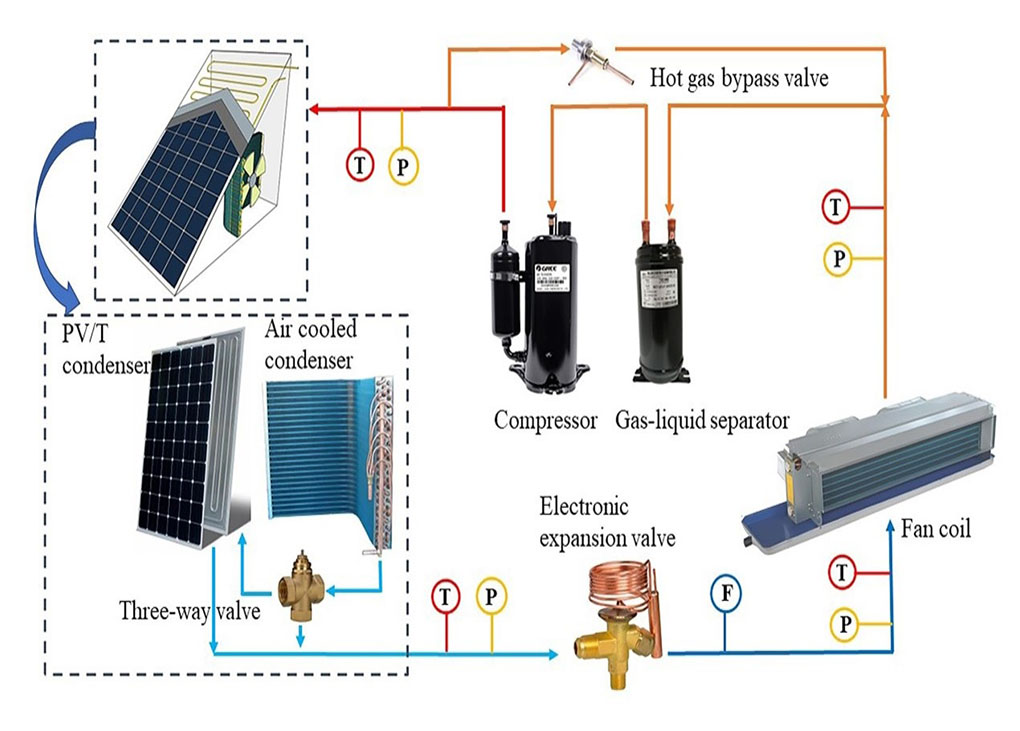Scientists in China claim to have developed a photovoltaic-thermal (PV/T) air conditioning system that uses an air-cooled condenser and a PV/T condenser combined in series.
The research was published recently in Applied Thermal Energy, a technical journal.
Researchers from Hebei University of Technology say they have designed the photovoltaic-thermal air conditioning system, whose novelty arises from using these two components rather than the more commonly implemented PV/T heat exchanger as the condenser.
“When solar energy and long-wave radiation energy resources are available, the proposed system is suitable regardless of the type of buildings,” says researcher Man Fan. “The system performance is improved by the complementary utilisation of solar energy, air energy and long-wave radiation energy.”
Fan says the PV/T condenser generates power during the day and assists the air-cooled condenser with heat dissipation during the night.
The system features an evaporator and condenser, a compressor, an electronic expansion valve (EEV), a four-way reversing valve, a gas-liquid separator, and a hot gas bypass valve. It uses R410A refrigerant.
“A bypass pipe is set between the air-cooled condenser and PV/T condenser,” the scientists say. “By controlling valves near the bypass pipe, the system can be converted between the air-cooled PV/T air conditioner and conventional air-cooled air conditioner.”
The research team says that the switch of air-cooled air conditioning system and the air-cooled PV/T air conditioning system depends primarily on the condensing effect of the PV/T exchanger.
The academics used a software program that offers simulation models for finned-tube evaporators and condensers. They found that the heat dissipation rate of the system condenser is “positively “correlated with outdoor wind speed, refrigerant flow rate and inlet temperature, and “negatively” correlated with solar irradiance and outdoor temperature.
Click here to read the researchers’ article.
Image courtesy of Hubei University of Technology.
 Matt Dillon
Matt Dillon


Leave a Reply